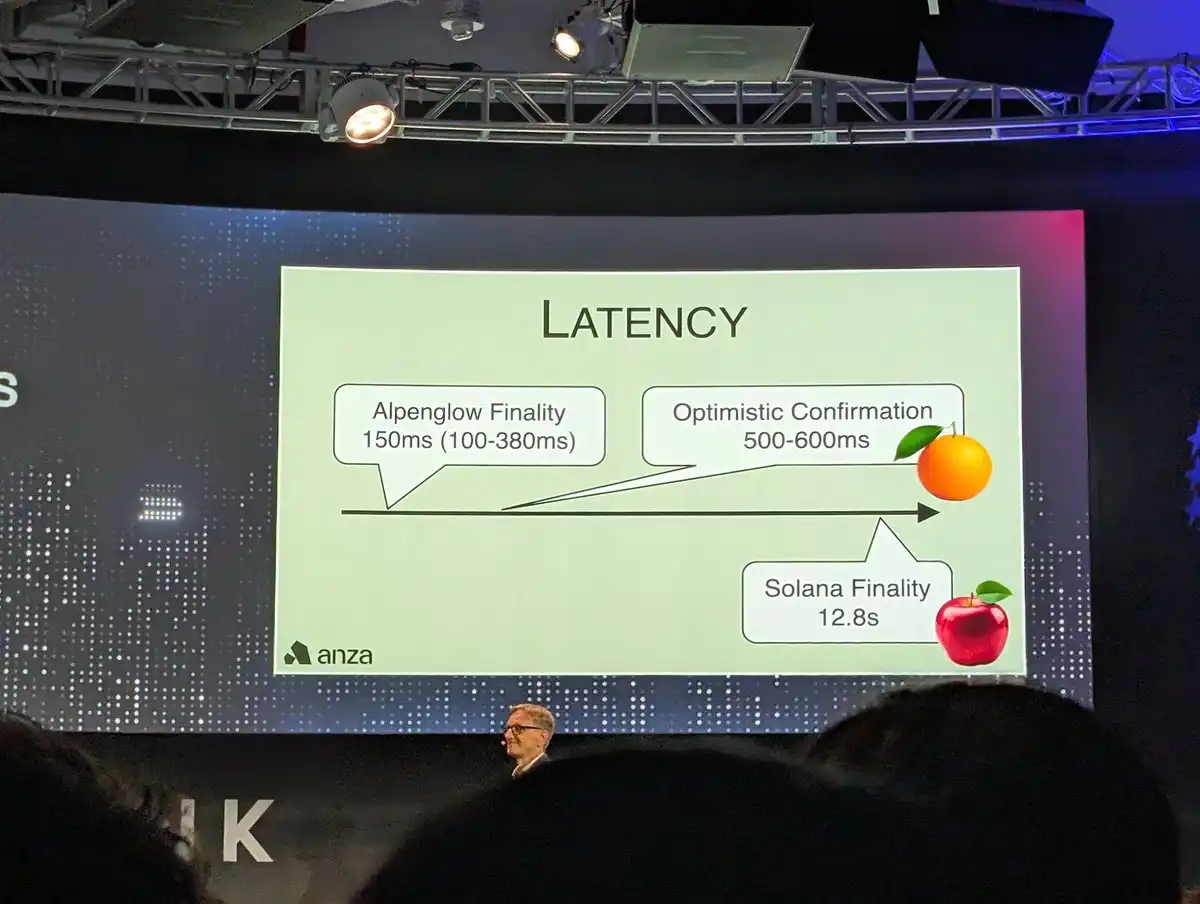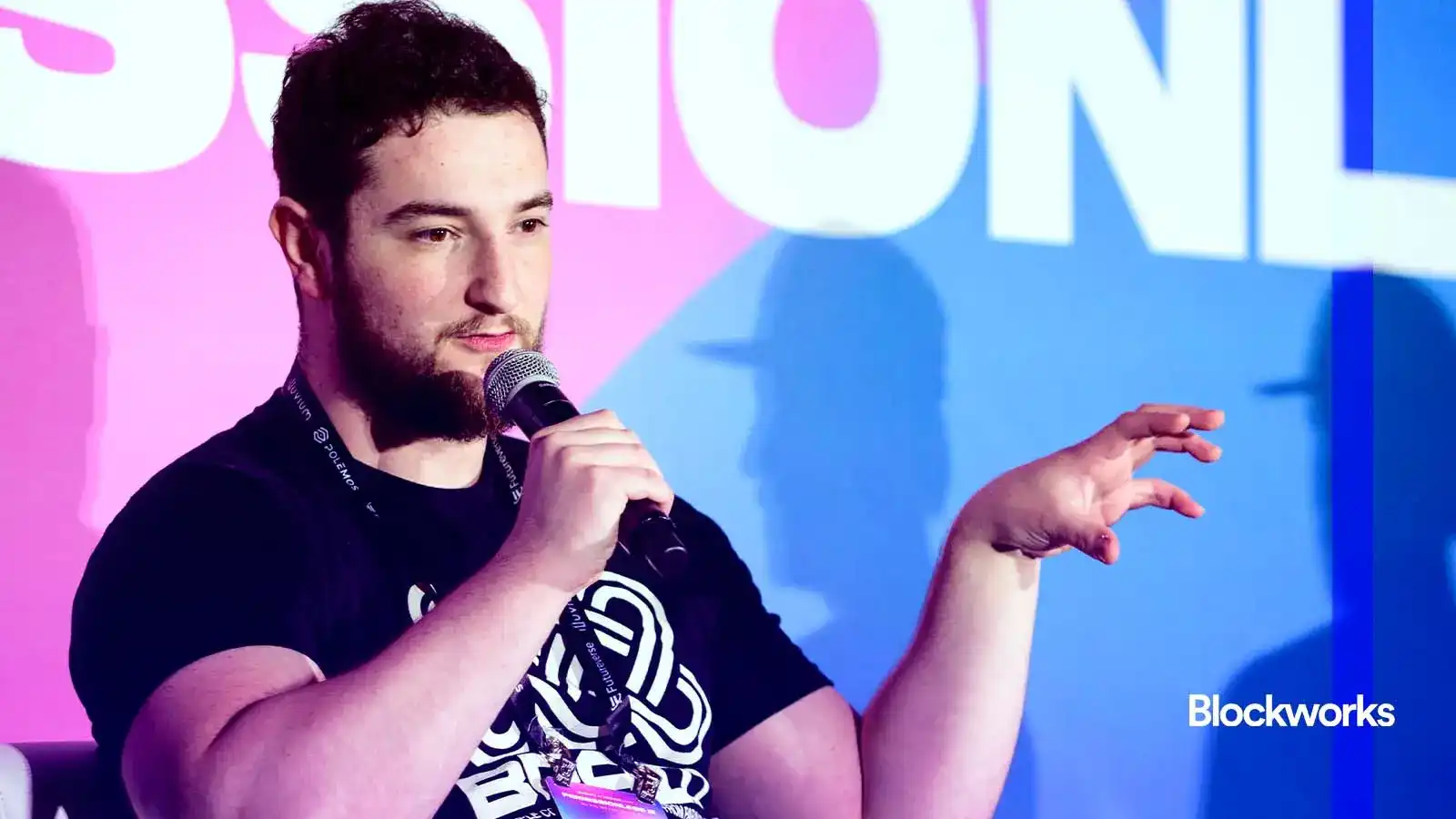On May 20, 2025, a company called Anza, founded by executives and core engineers from Solana Labs, announced a plan hailed as "the biggest change to the Solana core protocol in history" — Alpenglow. This new architecture will replace the existing TowerBFT consensus mechanism and historical proof timestamp system with Votor and Rotor components, aiming to make Solana a faster, more stable high-throughput Layer-1 blockchain, competitive with internet infrastructure.
The two most important points of this Solana transformation are as follows.
· Innovation of the Votor consensus mechanism: Votor replaces TowerBFT, adopting a more efficient direct communication model that accelerates block confirmation through a parallel voting mechanism. When 80% of the staked nodes agree, a block can be confirmed in one round; when the staking ratio is 60%, two rounds are needed for confirmation. This design reduces block processing time to 100-150 milliseconds, significantly enhancing transaction speed and network scalability.
· Rotor block propagation optimization: Rotor improves the Turbine system by enhancing block propagation efficiency through single-layer relay nodes and staking-based bandwidth optimization. Combined with erasure coding technology, Rotor ensures that block data can be quickly distributed and reconstructed from partial data fragments, further enhancing the performance and stability of the Solana network.
How significant is changing the consensus mechanism?
The consensus mechanism is a core pillar of blockchain technology, directly determining the network's security, efficiency, and degree of decentralization. Its transformation is a milestone in the history of blockchain development. Solana's existing TowerBFT consensus mechanism is known for its high throughput, but as the network rapidly expands, it faces challenges of transaction congestion and resource allocation efficiency.
Anza's Alpenglow plan aims to completely reshape Solana's consensus mechanism by introducing Votor and Rotor components, addressing these pain points and further unleashing the network's potential. Anza's core team members Quentin Kniep, Kobi Sliwinski, and Roger Wattenhofer stated in the white paper: "The release of Alpenglow will be a turning point for Solana; it is not just a new consensus protocol but a key step for Solana to achieve competitiveness on par with internet infrastructure."
The scale and impact of this transformation can be compared to Ethereum's historic transition from proof of work (PoW) to proof of stake (PoS). Alpenglow not only optimizes the block proposal and verification process, reducing transaction latency, but also enhances the network's degree of decentralization and resistance to attacks by redesigning the economic incentive mechanism.
More importantly, it opens up new possibilities for Solana. It supports higher transaction throughput, lower fees, and a broader range of application scenarios, from DeFi to the comprehensive explosion of Web3 applications. The success or failure of this transformation will directly determine whether Solana can gain an advantage in the competition with Ethereum and even challenge the status of traditional internet infrastructure. As Anza envisions, Alpenglow is not just a technical upgrade but aims to make Solana the cornerstone of the next generation of the internet, redefining the role of blockchain in the global digital economy.

The Alpenglow plan launch event, image source from X
What is Anza, originating from the core circle of the Solana Foundation?
Anza's story began in the core circle of Solana Labs, a company spun off by executives and core engineers from Solana Labs in 2023. Solana Labs, as the original developer of the Solana blockchain, focused on the underlying design of the protocol and the early expansion of the ecosystem. However, with the rapid growth of the Solana network, issues of surging transaction volume and network congestion became prominent, necessitating a more flexible and focused entity to address technical challenges and accelerate innovation.
Anza was born out of this need, with the intention of creating a next-generation developer hub centered around Solana, focusing on core engineering, validator client optimization, and the widespread application of the Solana Virtual Machine (SVM), thereby promoting the long-term development and competitiveness of the ecosystem without dispersing the core resources of Solana Labs.
Anza's team consists of top talents in the blockchain field, with core members including Quentin Kniep, Kobi Sliwinski, and Roger Wattenhofer. Quentin Kniep is an engineer with years of experience in distributed systems and high-performance computing, having led core protocol optimization work at Solana Labs, adept at translating complex technologies into practical solutions. Kobi Sliwinski is known for his expertise in consensus mechanisms and network architecture design, having contributed key code to the development of TowerBFT in the early days of the Solana ecosystem. Roger Wattenhofer, a researcher with significant influence in both academia and the blockchain industry, provides theoretical support for Anza's technological innovations with his extensive experience in distributed computing and cryptography. This team's combination of engineering, research, and productization advantages makes Anza a technological pioneer in the Solana ecosystem.
In fact, prior to Alpenglow, Anza was already active last year. On January 30, 2024, Anza announced the development of the Agave validator client, a project forked from the Solana Labs validator client, aimed at maximizing network uptime and paving the way for the launch of other clients. In response to the congestion issues faced by the Solana network during rapid growth, Anza released a patch version V1.17.31 in April 2024 and plans to continue optimizing in the subsequent V1.18 version. They have been working closely with core contributors to develop solutions for bottleneck issues related to the QUIC protocol and the Agave client under high load.
The "refugee camp" of the Ethereum Foundation
Anza's appeal lies not only in technological innovation but also in its magnetic effect of gathering top talent. In December 2024, prominent Ethereum researcher Max Resnick made the switch to Anza. Resnick gained fame for his "sharp critiques" of Ethereum's scaling roadmap, arguing that Ethereum relies too heavily on Layer-2 solutions and should focus on optimizing the base layer.
Encouraged by Solana co-founder Anatoly, Resnick took three months to make his decision and ultimately chose to join Anza. His arrival was seen as a "major victory" by the Solana community, and even Ethereum co-founder Joseph Lubin welcomed him, believing it would promote the collision of ideas between the two ecosystems.
Related reading: "Core circle researcher discusses ETH: It's time to redesign Ethereum's roadmap | In-depth interview"
At Anza, Resnick has a clear goal. In his first 100 days after joining, he focused on optimizing Solana's fee market and consensus mechanism while delving into the core operations of the protocol. He proposed a "moon landing plan" — introducing a "multi-leader" mechanism to break the current model where a single leader proposes blocks for both Solana and Ethereum.

Ethereum researcher Max Resnick, image source from Blockworks
In Resnick's view, a single leader holds too much economic power, leading to inefficiencies in the protocol, while a multi-leader competitive mechanism would reduce the extraction of economic value and significantly enhance network efficiency. He candidly stated that Solana's culture is more open and willing to embrace non-traditional ideas, while Ethereum often stagnates due to "political resistance." Resnick even bluntly remarked: "Ethereum's culture is heavily influenced by core developers, and those who want to get things done have to adjust their ideas to preserve political capital." This cultural difference prompted him to choose Solana, believing it to be a better fit for realizing his technical vision.
免责声明:本文章仅代表作者个人观点,不代表本平台的立场和观点。本文章仅供信息分享,不构成对任何人的任何投资建议。用户与作者之间的任何争议,与本平台无关。如网页中刊载的文章或图片涉及侵权,请提供相关的权利证明和身份证明发送邮件到support@aicoin.com,本平台相关工作人员将会进行核查。



